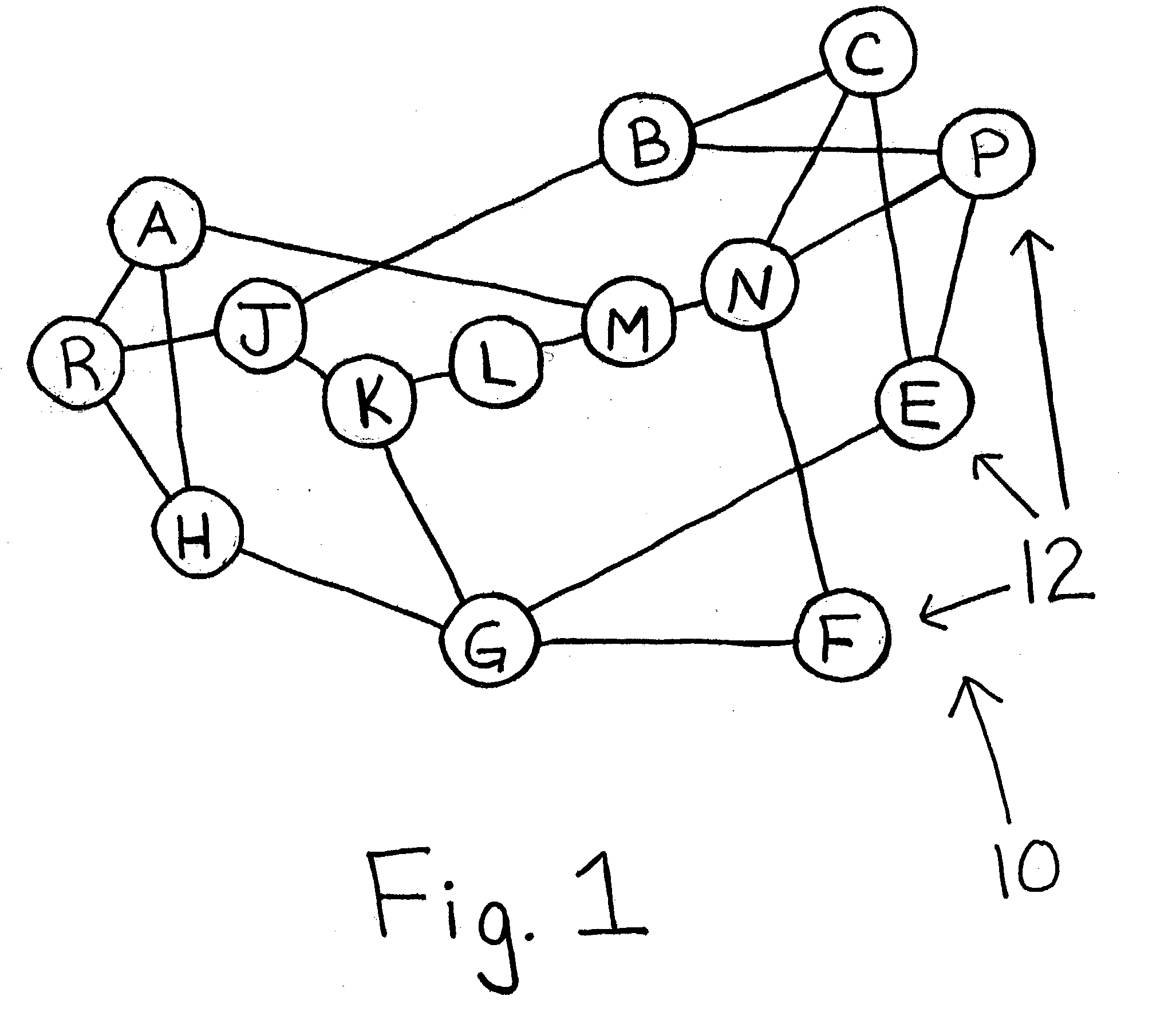Routing method for mobile infrastructureless network
a technology of infrastructure and routing method, applied in data switching networks, frequency-division multiplexes, instruments, etc., can solve the problems of limiting both survivability and scalability, affecting the service life of the network, and the cost of this expensive infrastructure is a major consideration
- Summary
- Abstract
- Description
- Claims
- Application Information
AI Technical Summary
Benefits of technology
Problems solved by technology
Method used
Image
Examples
Embodiment Construction
[0026] For Purposes of the Present Invention, the Following Definitions Will Apply:
[0027] MANET--Mobile Ad-hoc Network is a collection of Nodes, each of which communicates over wireless channels and is capable of movement, without the required intervention of a centralized access point or existing infrastructure.
[0028] Nodes--Mobile or fixed routers with wireless receivers or wireless transmitters, which are free to move about arbitrarily.
[0029] Source (S) Nodes--Any Node in the network which transmits a forward control packet.
[0030] Intermediate (I) Nodes--Any Node in the network which receives and relays control packets and / or message information between the source Node and a destination Node.
[0031] Neighbor Nodes--Nodes located adjacent to another Node without an intervening Node there between regardless of whether a link exists between the adjacent Nodes.
[0032] Destination (D) Nodes--Any Node located in the network which is intended to be recipient of the control packet and / or m...
PUM
 Login to View More
Login to View More Abstract
Description
Claims
Application Information
 Login to View More
Login to View More - R&D
- Intellectual Property
- Life Sciences
- Materials
- Tech Scout
- Unparalleled Data Quality
- Higher Quality Content
- 60% Fewer Hallucinations
Browse by: Latest US Patents, China's latest patents, Technical Efficacy Thesaurus, Application Domain, Technology Topic, Popular Technical Reports.
© 2025 PatSnap. All rights reserved.Legal|Privacy policy|Modern Slavery Act Transparency Statement|Sitemap|About US| Contact US: help@patsnap.com



